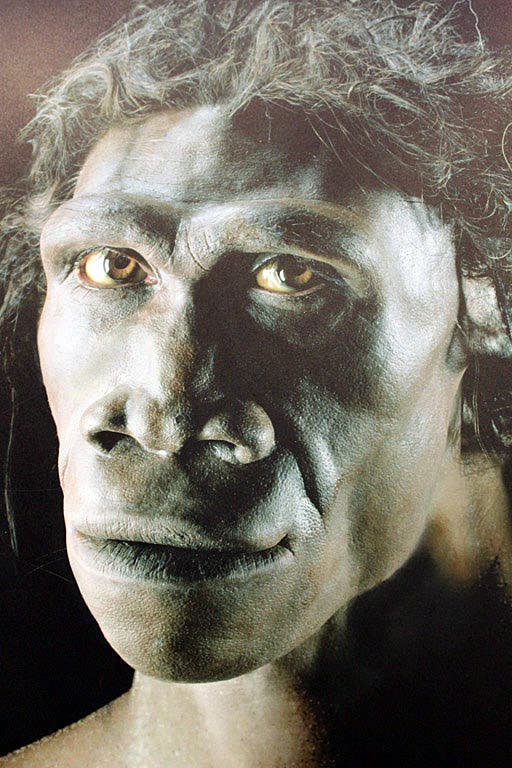
To say the sex lives of our ancestors was complicated would be an understatement. After they migrated out of Africa into Eurasia, humans interbred with Neanderthals, Denisovans, and at least one other group of archaic people belonging to our genus. Evidence of this latter interbreeding lives on in our genes, according to a new study by researchers in the United States. The identity of this group is still shrouded in mystery.
When Homo sapiens migrated in large numbers out of Africa through the Middle East into Europe and Asia, they came in contact with the Neanderthals, who had been masters of their domains for thousands of years prior to the arrival of anatomically modern humans. The two species interbred, the effects of which are still seen in the genomes of people alive today who are not of Sub-Saharan heritage. About 2% of the DNA in the genomes of modern-day people with Eurasian ancestry is Neanderthal in origin.
But the gene flow goes both ways, of course. In a new study, Melissa Hubisz and Amy Williams of Cornell University and Adam Siepel of Cold Spring Harbor Laboratory performed a complex genomic analysis of the DNA of two Neanderthals, a Denisovan and two living African humans. The latter have no Neanderthal DNA in their genomes, as opposed to Caucasians, which helped the researchers differentiate patterns of ancient interbreeding.
The team of researchers employed a computational method that enabled them to identify recombination events, in which segments of the chromosomes from one individual become incorporated into the chromosomes of another. This clever method can map out the tree of relationships among individuals at every position along the genome.
In more practical terms, this approach enabled the researchers to uncover previous instances of mating nested in the genomes of living or extant species. For instance, if Neanderthals mated with some other human species, and later these descendants mated with modern humans, this method can uncover that initial instance of ancient interbreeding.
As it turned out, the study revealed some amazing instances of such nested insections of DNA. For instance, 3% of the Neanderthal genomes came from ancient humans, estimated to have occurred 200,000 to 300,000 years ago. This is additional evidence supporting the fact that humans left Africa in multiple waves before making a huge leap out of the continent primarily 50-60,000 years ago. These early migratory waves of humans were likely assimilated by Neanderthals or were wiped out one way or the other.
But the most striking finding was that 1% of the Denisovan DNA came from a yet unidentified species of ancient humans. The interbreeding occurred roughly one million years ago, a timeline that suggests the lover may have been Homo erectus. Sadly, no Homo erectus DNA has ever been found, so this hypothesis remains speculation at this point. It may very well have been some different, yet to be identified species altogether.
In any event, both interbreeding events have been passed down to living modern humans. About 15% of the interbreeding sequences found in the Denisovans are present in living people today, the researchers reported in the journal PLoS Genetics.
Given the sheer number of gene exchanges between ancient humans and their extinct relatives, it’s very likely that genetic exchange took place whenever two distinct groups of humans overlapped in time and space. The same algorithm employed by the study could be used to study gene flow in other species where interbreeding occurred in the distant past, such as between wolves and dogs.
“What I think is exciting about this work is that it demonstrates what you can learn about deep human history by jointly reconstructing the full evolutionary history of a collection of sequences from both modern humans and archaic hominins,” Siepel said in a statement. “This new algorithm that Melissa has developed, ARGweaver-D, is able to reach back further in time than any other computational method I’ve seen. It seems to be especially powerful for detecting ancient introgression.”









